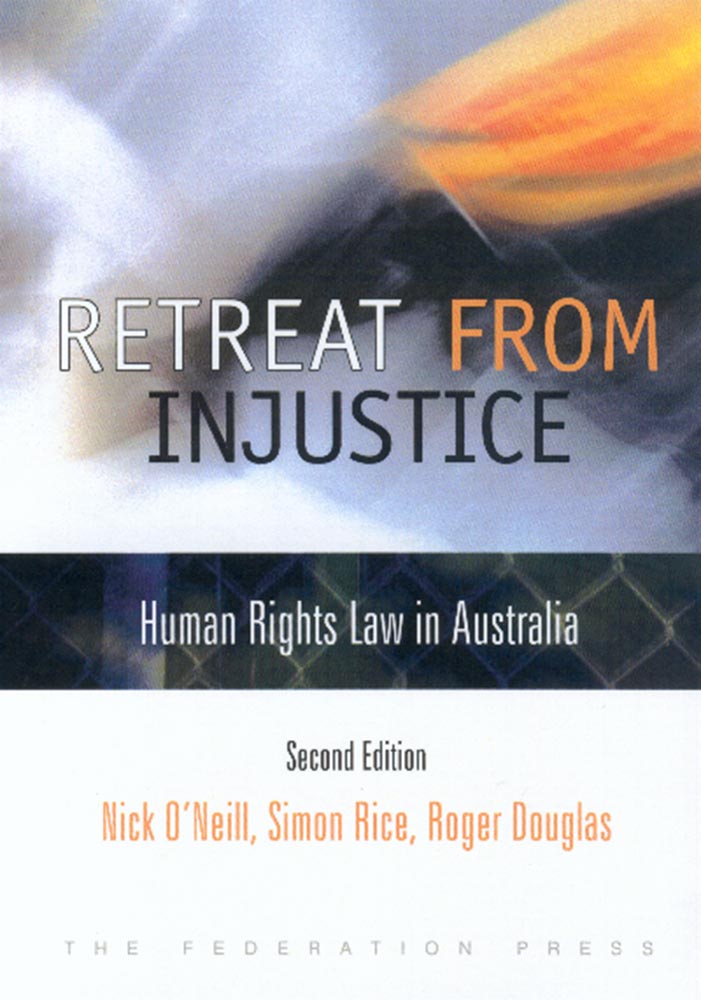This new edition of Retreat from Injustice has the strengths and style of its predecessor:
- the account of human rights in Australia is firmly grounded in historical and international contexts;
- the availability and limitations of rights and freedoms are clearly detailed and illustrated with cases; and
- a particular spotlight is placed on key current human rights issues including terrorism, indigenous issues and asylum seekers.
a useful resource for anyone who has an interest in the area of human rights, especially legal practitioners, students and politial commentators.
The Catholic Weekly, October 21, 2007
[The authors’] intention is one of examining ‘how and the degree to which universally accepted human rights are enforced in Australian law.’ (p 26). That the book achieves this end cannot be questioned. It is a carefully structured, highly detailed and exceptionally well referenced consideration of the historical progession of the definition and protection of human rights, both on the international stage and in Australia (to which they devote three-quarters of the book).
For the generalist such as myself, the potted history of human rights law in chapter 1 was actually fascinating reading … From the Magna Carta to the 1948 UN Universal Declaration of Human Rights, the authors weave a story that is both factual and discursive. …
At the end of the first 212 pages of solid reading, … there is no doubt the reader will be informed to the extent of being able to conduct an intelligent debate about Australia’s position on human rights. …
The remainder of the book appears to be more for the specialist. If you are interested or work in the equal opportunity, indigenous rights, or immigration arenas there is plenty here for you …
Public Administration Today, July-October 2005
Retreat from Injustice offers an incisive analysis of the effectiveness (or perhaps ineffectiveness) of the mechanisms to protect human rights in Australia. It raise the fundamental question of how rights can best be protected in Australia and reveals, at least to this reader, the stark inadequacy of the current methods. … Let’s hope the next edition will be able to bring some good news.
UNSW Law Journal, Vol 27(3) 2004




